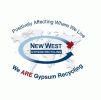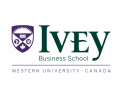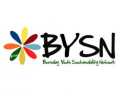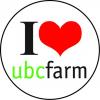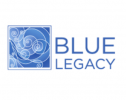Blog Post: The upside of proactive non-technical risk management

AME BC Roundup 2015
By Jason Robinson
The overarching message of this year’s Association for Mineral Exploration of BC’s ("AME BC") annual Roundup conference was one of collaboration and engagement; all parties seemingly wanting to find a way forward to rekindle the fire of opportunities for the mining industry and the BC provincial economy.
Industry professionals, business and community leaders offered their tips and tools for attendees to take back to their respective organizations. Their intention? To help others replicate their successes, and foster an environment of collaboration.
Show Case Session: The Business Case for Relationship Building in the Mineral Exploration & Mining Sector – The Upside of Managing Aboriginal Risk.
Addressing the audience for the first Show Case Session at Roundup 2015, Don Lindsay, President & CEO of Teck Resources Ltd., spoke of a common understanding for all British Columbians. Mr Lindsay says, “whether we’re talking about aboriginal or non-aboriginal communities… we’re all in this together… we all want the same thing”.
As one of the Mining industry’s leaders in sustainability Mr. Lindsay is an advocate for responsible and respectful development. He encourages collaboration, consultation, dialogue and meaningful engagement that establishes what the priorities are for a community saying,
“We need to listen, and really hear what's important to people.”
Not surprisingly, as a result of Mr. Linsday’s corporate and industry leadership Teck has recently been recognized for the 3rd year in a row as one of the Global 100 Most Sustainable companies by Corporate Knights, a recipient of the Award for Corporate Environmental Excellence at the 2014 Globe Awards, and were ranked in the Dow Jones Sustainability World Index (DJSI) for the 5th year in a row (ranking Teck’s sustainability practices in the top 10 per cent of the world’s 2,500 largest public companies).
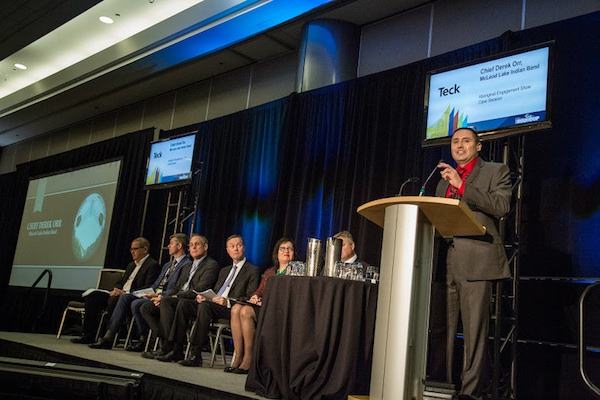
Image credit: Mark Kinsofer visionphoto.ca
Another distinguished panelist at the session was Chief Derek Orr, of the MacLeod Lake Indian Band. Chief Orr proudly shared his community’s recent turn-around success story. Close to bankruptcy just a decade or so ago, Chief Orr says his community is “open to taking advantage of opportunities but not at the cost of the environment.” The bottom of Chief Orr’s business card reads;
“Making sure the footprints we leave behind
are the ones our Children will be proud to walk in”
The key to the successful economic turnaround for the community was “getting the right people, proper planning, and spending our resources efficiently”
Chief Orr used Thompson Creek Metals Company Inc. and the Mt. Milligan mine as an example of a successful project that met the band’s criteria for a good community partner. Chief Orr shared how the company’s consultative approach and economic benefits of approximately $35M in annual contracts, helped to create many new opportunities for his people.
Duz Cho Forest Products, and Tse’Khene Food & Fuel are just two examples of new businesses that have benefitted the Macleod Lake community. These businesses underscore the important economic and self-actualizing opportunities that can change the lives of those living in rural communities. See mlib.ca and video for more on the subject: http://bit.ly/1Acj3v8
Speaking to Sustainability TV, Lana Eagle, Chair of the Aboriginal Relations Committee for AME BC and session moderator said; "it's nice to see Aboriginal engagement happening here at Roundup." Eagle stresses that all relationships are unique; drawing attention to the fact that just as people are different, so are communities. Eagle shares that whether we're building a relationship with one person or many, the key is getting to know each other first.
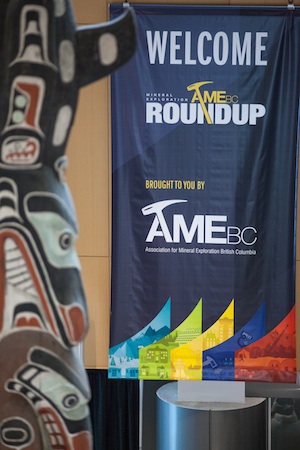 International competitiveness for investment dollars was also a hot topic at the show case session. Questions from the audience alluded to what was likely on many peoples minds; “how Canada is fairing against its competitors? Rick Rule, Chairman of Sprott Asset Management USA Inc. was quick to point out that capital is globally mobile and is being deployed in jurisdictions that are most attractive to investors.
International competitiveness for investment dollars was also a hot topic at the show case session. Questions from the audience alluded to what was likely on many peoples minds; “how Canada is fairing against its competitors? Rick Rule, Chairman of Sprott Asset Management USA Inc. was quick to point out that capital is globally mobile and is being deployed in jurisdictions that are most attractive to investors.
As seasoned investors know, the overall attractiveness of an investment is calculated in light of numerous risk assumptions. Namely things like; the potential rate of return, any potential for political risk or uncertainty, currency risk, labour relations, the ability of a company to engage with community and other strategic partners, and the environmental and other regulatory processes with a particular jurisdiction.
Non-technical challenges, also known as “sustainability issues” are largely made up of environmental footprint, and social impact challenges. While Canada may be much more attractive than other competing jurisdictions that may have to deal with extreme political issues such as armed conflict, the place to “find” investment value opportunities in stable jurisdictions clearly exist in the social and environmental space.
When we look at a potential investment, the time required to get a mine approved is a major concern, and so both the process and robust community buy-in are incredibly important investment determinants. How do we put a figure on what this value might be?
Jonathan Molyneux, Managing Partner ERM, one of the worlds top sustainability consulting firms, estimates that technical challenges are “very significant” to overall investment performance. In his company’s case studies of 170 capital projects with a value of $500M or more, they found that 45% the projects were delayed by non-technical issues. These non-technical delays in some cases can have a serious effect on the NPV (net present value) of the asset: (27:25 https://bit.ly/1Lx5F8C )
Mr. Molyneux’s findings are being echoed by other real world case studies from companies such as Goldman Sachs: http://bit.ly/1ExezRw BSR Business for Social Responsibility 2011: http://bit.ly/1tMBNPM and in the recent Roundup 2015 presentation by Bruce Sprague, Partner of Ernst & Young LLP. Although Mr. Sprague’s presentation was hypothetical in nature, what is clear is that whether a real-world or an academic exercise sustainability (ie: reducing non-technical risk) just makes good business sense.
Jeff Wilson, formerly Director of Geology with Tetra Tech says in a 2013 interview, “that Canada has some of the most stringent environmental regulations in the world” and the combination of personal professional accountability, transparency of law, and financial opportunities helps to give Canada the most buoyant mining and financial industry’s in the world: (34:30 http://bit.ly/2b4tacl )
The global economic meltdown of 2008/9 has had an undeniable affect on mineral prices, employment, and exploration expenditures. Despite these challenges British Columbia continues to be a centre for mining excellence and has been able to continue to attract the highest mineral exploration expenditures of any province in Canada, second only to Ontario. British Columbia has approved construction of a new mine in three out of the last four years (Copper Mountain 2011, New Afton 2012, Mount Milligan 2013. In February of 2015, commissioning activities for the Red Chris Mine were also announced. According to the TMX Group, the Province of British Columbia is now headquarters to 58% of all TSX / TSX:V listed mining companies. For more information see the latest edition of the Mineral Exploration Magazine http://bit.ly/1rYevVO
The Mining Association of Canada ("MAC") "Facts & Figures of the Canadian Mining Industry 2014" reports that Mining contributed 54 Billion dollars the the Canadian economy in 2013. MAC reports that on a proportional basis, Mining is "the largest private sector employer of Aboriginal people in Canada," with some of the highest wages and salaries of all industrial sectors. For more information on Mining in Canada, see Natural Resources Canada ("NRCAN") Canadian Mineral Exploration Information Bulletin, March 2014: http://bit.ly/1uGeWni
Andrea Clifford, Director, Business Development at Geoscience BC sees the technical work of the non-profit organization as an asset to all British Columbians. Geochemical and geotechnical data are critical risk reduction tools for the resource industries. Clifford says "sometimes geoscience data can be seen as infrastructure" likening high quality scientific geotechnical data to that of how a library functions for the benefit of an entire community. Having access to high quality technical information helps investment decision makers make better decisions, and can have a major effect on the efficiency of resource allocation, job creation, and improving ecological performance of mining and energy projects.
In addition to its central role of providing earth science to encourage investment in the mining and energy sectors Geoscience BC provides information that facilitates surface and ground water protection. Geoscience BC is currently conducting an assessment of the economic viability of geothermal energy for electrical power generation in British Columbia, and has recently launched an online tool to facilitate the use of technical data. Check out Geoscience BC's Earth Science viewer: http://bit.ly/1CFiy8X
Andrew Randell, Principal Geologist Strata Geo Data Services has taken the initiative to help support mining industry professionals with a continuing education program for geologists. According to Randell "initially, it was just a project to help a few friends get jobs with mining companies but it has expanded quickly." Randell says, “in less than a year, the group now has more than 200 members from 10 countries.” See an interview with Andrew Randell: http://bit.ly/1tTTIE5

Image credit: Mark Kinsofer visionphoto.ca
In addition to Randell, there are a number of other individuals working on industry education, and groups working to facilitate networking and employment opportunities for industry professionals. Yukon Dan (as seen above) hosts both industry and classroom education to adults and children alike. To book Yukon Dan for your next event see: www.yukondan.com and watch our coverage of the 2013 Fraser River Gold Panning Championships video:
Daniel Lipinski, President & CEO Wolfterra Exploration Ltd. says he’s a regular attendee of the local chapter of the global Mining Industry networking group “Mining 4 Beer.” Lipinski says he is also an active participant with Five Hole For Food’s “Mining for Food” campaign that raises donations from mining companies for the food bank by playing street hockey: http://bit.ly/1DY6QIR
Women in Mining BC (WIMBC) another professional industry group was also involved in Roundup 2015. The focus of WIM is to actively advocate for women in the mining industry. Mafalda Arias, Chair of Women in Mining BC says “According to the Report ‘Women: an Unmined Resource’ by APABC, AME BC and MABC dated November 14, 2011, female participation in the BC Mineral Exploration and Mining industry is estimated to be [approx.] 16%.” For more on Women in Mining BC see: www.wimbc.ca
Jeanne Liu, Consultant and member of the BC Mining HR Task Force: Diversity Women Subcommittee, the “Women an Unmined Resource” report also shows that “non-traditional occupations such as heavy equipment operators, tradewomen and labourers are estimated to be around 5%. [The] low percentage is due to a minimal understanding of roles available, lack of reachable role models, career educators wanted access to women working in the industry.” Read the full report “Women an Unmined Resource” http://bit.ly/1D0W6KU.
Liu could also be found at Roundup volunteering at the Mining for Miracles booth, in support of BC Children’s hospital. In the Human Resources Show Case Session Lui presented a video project on behalf BC Mining HR Task Force: Diversity Women Subcommittee. Liu says; the “Living The Mining Dream” video series features six women working and living in BC’s mineral exploration and mining industry. These videos are designed to motivate and engage other women to explore a career in mining. The Subcommittee is really creating an inspirational legacy! Ultimately, we would like to influence female participation in our industry!” Click here to see their video series: http://bit.ly/1wUWJyX
Resource Works director Barinder Rasode and Executive Director Stewart Muir were also at Roundup 2015 looking to facilitate consensus in the Resource sector. The pair have teamed up to grow the reach of the non-profit society Muir founded in 2014. Muir says; “the mandate of the society is to study and talk about the linkages between a thriving natural resource economy and a society that offers opportunity to all.” He says the organization will use fact-based research to share their common ground message. For more on their work see: www.resourceworks.com
What emerges from a study of the extractive industry that everyone, whether aboriginal and non-aboriginal, stands to benefit from a respectful, collaborative can-do attitude towards non-technical risk. If Canadians can align our thinking, streamline our processes, and get to work, the benefits will become readily apparent in the health of our communities, our businesses, and our environment.
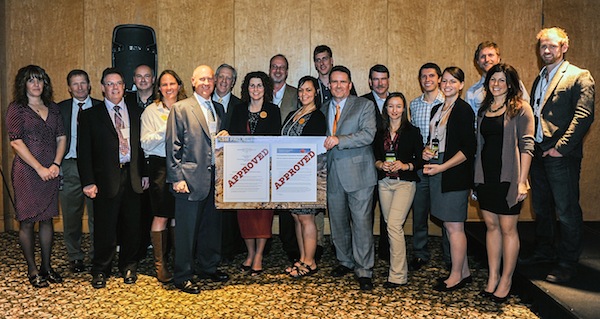
Photo credit: Seabridge Gold
Company officials at Roundup 2015 celebrated news of the approval of the Seabridge Gold KSM project near Stewart BC. Rudi Fronk, Chairman and Chief Executive Officer for Seabridge Gold said, “Roundup provided an opportunity for Seabridge to celebrate and share the story of our successful six-year environmental assessment process journey for the KSM Project, which culminated with approval we received from the BC and federal governments. These milestones prove that socially responsible companies with well-designed, environmentally responsible projects that are committed to meaningful community and aboriginal engagement can move resource development projects forward in BC by listening and implementing feedback into the design. We are grateful for the continuing support of the Nisga'a Nation as well as the other First Nations and local communities whose involvement made substantial contributions to achieve the success we have.”
Fireside Chat
Minister of Aboriginal Relations and Reconciliation John Rustad and Janet Mackenzie Manager of regulatory and Stakeholder Affairs at Hunter Dickinson met in the Gathering Place for a Fireside Chat. Minister Rustad encouraged the audience to find ways they can build real relationships and work together in mutual respect saying;
“Don’t think about how much [Community Engagement] is enough,
Get out early and talk about what you want to do,
Get input, and build a relationship”
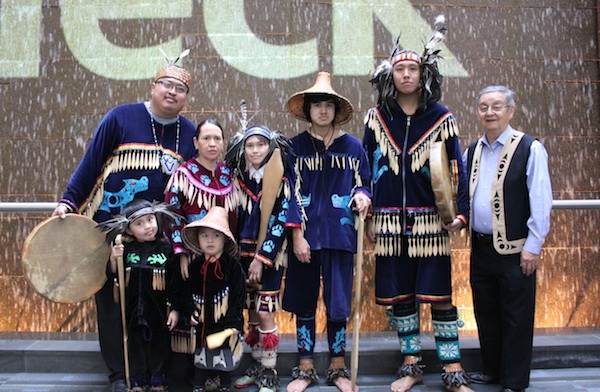
Image: Courtesy Sustainability Television
Cultural Awareness
Pictured above: Tsatsu Stalqayu is a young group of family & friends who are very active in every day First Nations culture and ceremonies. The group is based out of the Musqueam Nation, but in fact includes members from many other First Nations as well. The group was founded by Francis James (Stolo), family from Musqueam Alec Dan & Jeff Dan. Its members represent; Musqueam, Sto:lo, Squamish, Lil Wat, Lummi, Tsartlip, Okanagan, Tsiamshan and other First Nations (from time to time).
Francis James says; "Tsatsu Stalqayu in direct translation is Coast Wolves. We decided on this name to say we come from and represent many First Nations and are not exclusive to one Nation under our Coast Salish territory."
"Our dances & songs are energetic and give some history of our Coast Salish people. For many years even before contact many of our ceremonies were closed to public. Dances and songs were created to present & help educate non-native people of our history."
Bob Joseph, President of Indigenous Corporate Training Inc. gave a compelling presentation on First Nation’s cultural history, and some practical engagement tools for connecting with First Nation’s peoples. Mr. Joseph (a person of aboriginal decent himself) began his presentation describing both the importance of caring for community, and staying close to home for First Nations peoples.
Some of Mr. Joseph’s cultural observations and recommendations included the need to understand that Aboriginal Communities have historically been oral societies where:
- your word is very important.
- “listening” and “not interjecting” are good things.
Mr. Joseph also suggests that not all Aboriginal communities are alike. Often the resources available in the community define the lifestyles of the people in the community. For example:
- Agricultural communities didn’t typically move around as much.
- Communities that relied on fishing might build their homes where the fish would swim right up to the owner’s house.
Mr. Joseph shared another story that might give us all pause for reflection in our own lives. It surrounded the idea that many aboriginal communities could meet Maslow’s hierarchy of needs in as little as 9 weeks of work per year. If we contrast that with our lives today, things are much different and the societal implications of those differences are immense. For anyone interested in additional comparative analysis; see The Fraser Institute website on the subject of Tax Feedom day. In Canada this is generally considered to be sometime in June depending on which Province you live in: http://bit.ly/1uAdd53
Mr. Joseph also shared the origin of the extremely important concept of “unceded” territory. Citing text from the English Royal Proclamation of 1763;
“it is just and reasonable, and essential to our interest, that the several nations or tribes of Indians with whom we connected, and who live under our protection, should not be molested or disturbed in the possession of such parts of our dominions and territories as, not having been ceded to or purchased by us, are reserved to them, as their hunting grounds”
The AME BC has been very proactive in facilitating industry and Aboriginal relations and in 2013 released the Aboriginal Engagement Guidebook “A Practical and Principled Approach for Mineral Explorers.” Hear more on this subject from our 2014 interview with Lana Eagle:
Policies that create win-wins for everyone
Like Canada, many leadership-oriented jurisdictions are also finding innovative ways to marry pro-business, pro-ecology, and long-term community benefit thinking. Western Australia is an example of one jurisdiction that has been extremely proactive with their ability to streamline paperwork and other regulatory processes.
The Western Australian Department of Mines and Petroleum (DMP) has developed a robust online data system. The system offers filing of mine applications, safety resources, land titles, drill hole and geoscience data, interactive geological maps, and many other useful tools for mining industry professionals and communities.
With the average mine approval period in Western Australia now sitting around 28 months, there are great financial and competitive advantages for governments to develop these types of tools for use by industry and the communities in which companies do business. Follow this link to see the extensive list of Western Australian Department of Mines and Petroleum online resources: http://www.dmp.wa.gov.au/ and approval times: http://bit.ly/1HA8fLp
Richard LeBourdais Grand Chief, Whispering Pines/ Clinton band of the Shushwap Nation, was at Roundup 2015 as an advocate for his community. Chief LeBourdais was looking for ways to help keep the values and unique stories of his community intact. He said; “our elders have the knowledge related to the stories from way back, handed down from generation to generation. They’re the historians of our communities. We’re currently making a list of those who know our history, and putting together a book to help teach the younger generations.”
In looking for ways to help facilitate common ground, Chief LeBourdais says he also sees an opportunity to update laws to perhaps better serve aboriginal and non-aboriginal peoples alike. He suggests that each community and region in Canada is unique and therefore; “not one law fits every community.” Chief LeBourdais asked the hypothetical question of whether “the environmental assessment process could be regionalized” suggesting it might make it easier and faster for officials to make determinations, easier for companies to know how the laws will be applied and what is required of them, and written so that the wishes of First Nations are better served as well.
During Roundup the AMBC reported that BC Premier Christy Clark announced an initiative to improve the coordination of major mine permits across government, increased funding of the Mining and Mineral Resources Division of the BC Ministry of Energy and Mines, and extension of the $10-million mining flow-through share tax credit program to the end of 2015.
The CEO PANEL
The Roundup 2015 CEO Panel lineup included four top industry CEO’s Scott Broughton, President and CEO of Roca Mines Inc., Robert Gallagher, President and CEO, New Gold Inc., Rob Pease, President and CEO, Sabina Gold and Silver Corp., and Eira Thomas, President and CEO, Kaminak Gold Corporation.
Eira Thomas highlighted the benefits of mobile mine training, and modular learning which she suggested can be done in short chunks instead of long drawn out classroom time. Scott Broughton drew the attention of the audience to MABC’s “towards sustainable mining initiative: www.mining.bc.ca/tsm
Rob Pease credits the success of his previous project with Terrane Metals Corp. at Mt. Milligan to a few key factors saying; “ I always tell my team to approach these things in a transparent manner. When going into a community be open, talk to the whole community, tell them who you are, what you are proposing, what you know and what you don’t know. If you don’t have an answer, find out and get back to them.”
Mr. Pease also says when it comes to regulations; “we’ve got to make everyone’s job easier so we can all get to yes. Streamlining the permitting process by mapping out things like expectations of timelines for project proponents would be a valuable addition to current legislative procedures.” (update: as of Feb.13, 2015 the new President of Sabina Gold and Silver Corp. is Bruce McLeod)
According to Robert Gallagher, building skills in a community has been a key part the New Afton Mine success story in Kamloops, BC. Gallagher says; “On-the-job training allows our First Nations employees to fully benefit from their work experience.” Mr. Gallagher believes in the long term sustainability of the communities where his company operates saying;
“Sustainable mining is paramount to our vision. It is our goal that our host communities are better off after the end of the mine’s life.”
Overall, the Association for Mineral Exploration of BC’s 32nd annual Roundup event was a huge success with over 6,700 participants from 35 countries. Robert Linnen, PhD Director Resource Geoscience at Western University was glad to attend saying “this was our first time attending Roundup, we’ve been on the waitlist for quite some time.” Moving to the larger venue at the Vancouver Trade and Convention Centre enabled the conference to expand the trade show by approximately 30% and offer new opportunities for break-out sessions.
Chair of the Aboriginal Relations Committee for AME BC, Lana Eagle says; "whether you're an investor, a geologist, an Aboriginal person, a business person, or a student" Roundup is an opportunity to "be a part of the discussion... everyone has something to learn and contribute."
For more information on AME BC and Roundup, hear from AME BC President & CEO share his vision for the mineral exploration and industry development in BC from this 2014 interview: http://bit.ly/1vRDwEG
Going Forward
In addition to the companies present at Roundup there are many Canadian companies that are working to lead the extractives industries, both in Canada and abroad. High Velocity Equipment Training College is working to help meet the expected shortfall of trained workers in the coming decade. Business Development Manager for the college, Shawn Bonnough says; “we’re establishing joint-venture mining opportunities with First Nations people by combining Provincially recognized vocational training (Heavy Equipment Operators) and Self-Employed Contractors (Aboriginal Entrepreneurship) with small-scale gold processing and gravel operations.”
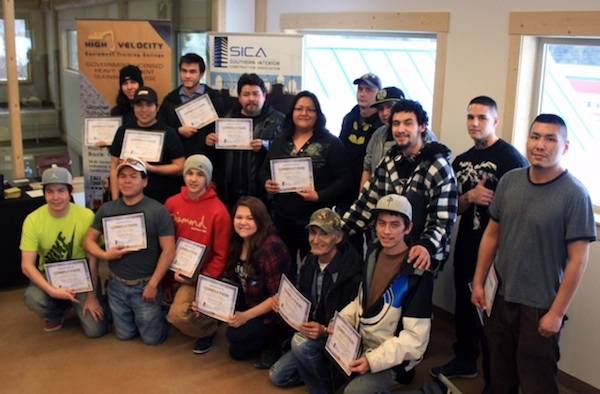
Image credit: High Velocity Equipment Training College
Mr. Bonnough goes on to say that this approach allows for “true sustainable revenue generating activities (which are led by the community via a Recognized Train-The-Trainer program) and a curriculum licensing approach which will enable an Aboriginal community to license, teach and train community members for internal employment as well as vocational training for the Oil & Gas, Mining, Construction and Road-building sectors.”
Private enterprise initiatives like these can not only increase the supply, but also the breadth of skill-sets available to a community. Mr. Bonnough says his company has historically been successful in assisting “97% of their publicly funded graduates to secure employment at the $70K per year industry average”. For more information visit: www.velocitytraininginc.com in BC and www.heavymetaltraining.com in Alta.
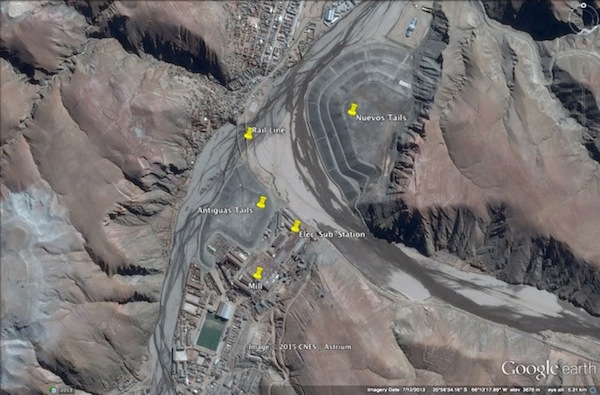
Image credits: BacTech Environmental and Google Earth
Another Canadian company, BecTech Environmental Corporation is currently working at their Telamayu project in Bolivia on improvements to both the environmental and financial performance of mining industry operations. Using their environmentally friendly proprietary Bioleaching technology, BacTech employs tiny bacteria to liberate difficult-to-treat sulphide ores and concentrates from mine tailings.
BacTech President and CEO, Ross Orr says, “At BacTech we have always believed that it is better to cure the patient rather than treat the patient with a band-aid. By replacing smelting and/or roasting with a bioleach process, we are able to eliminate the production of sulphur dioxide emissions which is the primary source of acid rain, and arsenic trioxide.”
The financial incentives seem to be there as well. Orr says, “the capital and operating costs of a bioleach facility are significantly less when compared to other existing treatment methods.” The cost of a Bioleaching facility can be assisted by a positive cash flow from the recovery of metals including gold, silver, cobalt, nickel, copper, uranium and zinc. Orr believes strongly in the future of his business saying “there are so many of these projects globally we see ourselves being busy for a very long time.”
For more on BacTech visit: www.bactechgreen.com
@JasonLRobinson
______________________________________________________
RELATED LINKS
INNOVATION in Industry series: http://bit.ly/2b4tacl
Mining Association of Canada (“MAC”) Towards Sustainable mining: http://bit.ly/1Gu2zlN
Mining for Food: http://www.fiveholeforfood.com/miningforfood
Video: "World Without Metals" https://bit.ly/2N60Rgz
Category:


















